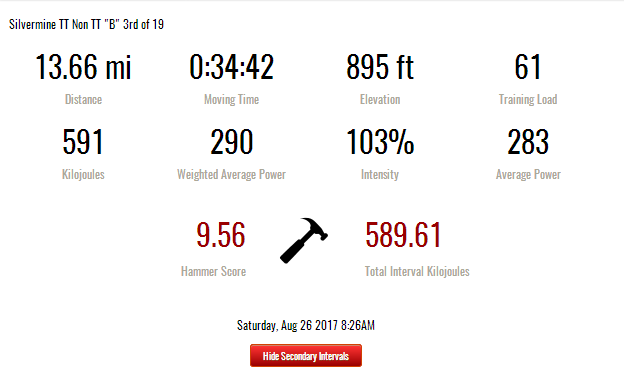|
Home > Rides > The Ride Page > Ride Header
Ride Header
The Ride Header displays important statistics generated by the ride, including
- Distance - (expressed in either miles or kilometers depending upon your settings)
- Moving Time
- Elevation - The amount of ascent achieved on a ride.
- Training Load - A number calculated from the Weighted Average Power from the ride, along with your FTP (the highest wattage you can maintain for an hour), and the rides duration which represents the training value of the ride. KOM Informatics uses a TRIMP derived system for calculating training load. The term TRIMP was coined by Roger Bannister a world class distance runner, and is short for Training Impulse. Here's more info on TRIMP
- Kilojoules - A kilojoue is 1000 joules. A joule is a unit of energy in the International System Of Units, and is defined as the work required to produce one watt of power for one second. The number above "Kilojoules" is the number of kilojoules produced on the ride.
- Weighted Average Power. The average power you would have attained had all of your effort been evenly distributed throughout the ride. Rides which contain harder efforts such as hill climbs or sprints, interspersed with easier periods will have a higher physiological cost then those rides in which an even effort is maintained. This higher physiological cost is reflected in the Weighted Average Power.
- Intensity - The effort level of a ride expressed in terms of a percentage of your FTP.
- Average Power - The sum of all the wattages recorded at one second intervals, divided by the number of seconds and rounded up to the nearest integer.
- Hammer Score - A formula which is meant to show the difficulty of the interval portion of the ride, which takes cyclist weight into account. The formula is: RideIntervalKJ * ((AverageIntervalWatts/FTP)/Weight(Kg)). The Weight(kg) is brought into the formula to even things out between cyclists of different weight, all other things being equal, a heavier cyclist will generate more power then a smaller one. AverageIntervalWatts is brought into play to favor those rides which have intervals in the top power zones.
- Total Interval Kilojoules - The total kilojoules for the interval portion of the ride.

See also
| 




